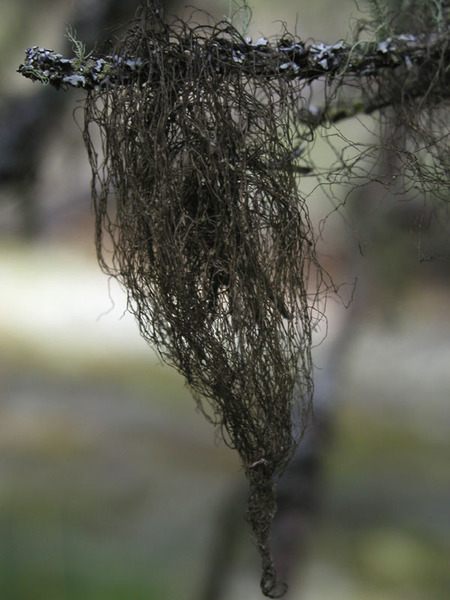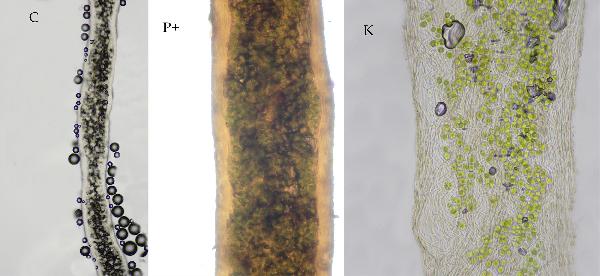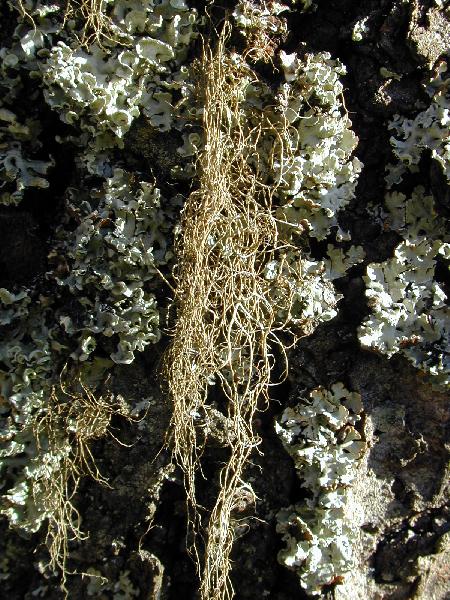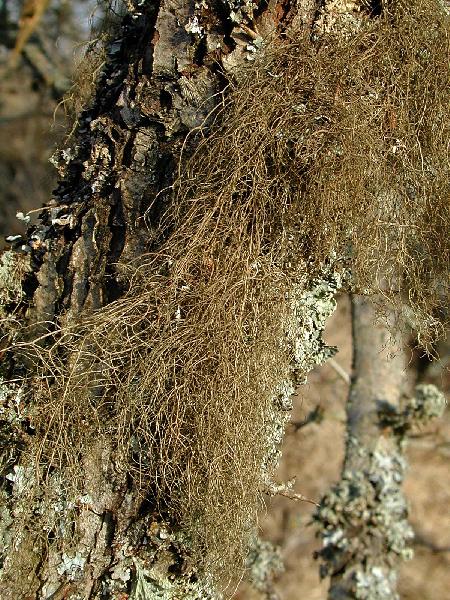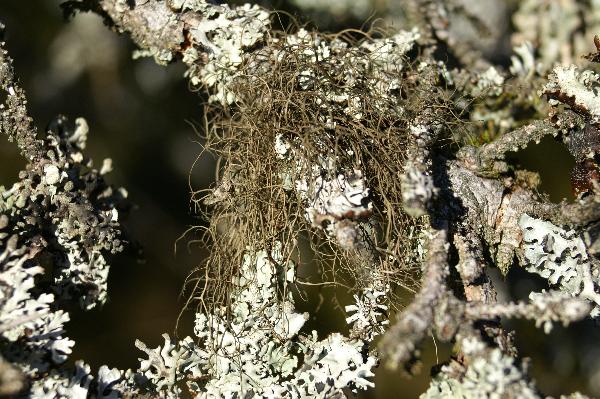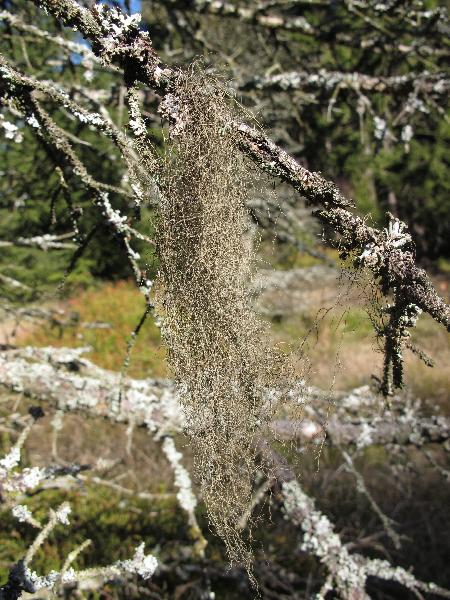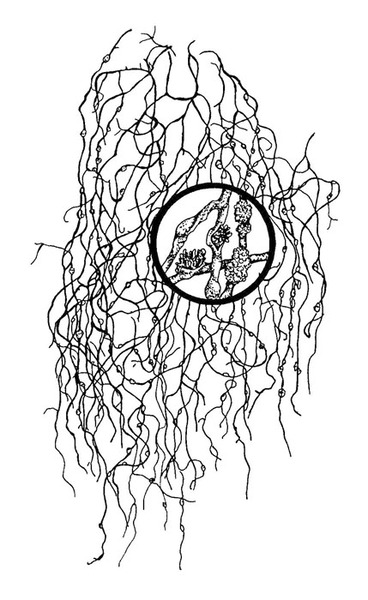Bryoria fuscescens (Gyeln.) Brodo & D. Hawksw.
Opera Bot., 42: 83, 1977. Basionym: Alectoria fuscescens Gyeln. - Nytt Mag. Naturvid., 70: 55, 1932.
Synonyms: Alectoria achariana Gyeln.?; Alectoria catharinae Räsänen; Alectoria chalybeiformis (L.) Röhl.; Alectoria crispa Motyka; Alectoria haynaldii Gyeln.; Alectoria implexa (Hoffm.) Röhl.; Alectoria jubata auct. p.p.; Alectoria jubata var. lanestris Ach.; Alectoria kuemmerleana Gyeln.; Alectoria lanestris (Ach.) Gyeln.; Alectoria osteola Gyeln.; Alectoria positiva (Gyeln.) Motyka?; Alectoria prostratosteola Gyeln.; Alectoria subachariana Gyeln.; Alectoria valparolae Sambo; Alectoria zopfii Asahina; Bryopogon implexus (Hoffm.) Elenkin; Bryopogon jubatus (L.) Link; Bryopogon lanestris (Ach.) Gyeln.; Bryoria chalybeiformis (L.) Brodo & D. Hawksw.; Bryoria fuscescens var. positiva (Gyeln.) Brodo & D. Hawksw.; Bryoria implexa (Hoffm.) Brodo & D. Hawksw.; Bryoria intricans (Vain.) Brodo & D. Hawksw.; Bryoria kuemmerleana (Gyeln.) Brodo & D. Hawksw.; Bryoria lanestris (Ach.) Brodo & D. Hawksw.; Bryoria osteola (Gyeln.) Brodo & D. Hawksw.; Bryoria positiva (Gyeln.) Bystrek; Bryoria subcana (Nyl. ex Stizenb.) Brodo & D. Hawksw.; Evernia jubata (L.) Fr.; Lichen chalybeiformis L.
Distribution: N - VG (vidi!), Frl, Ven (Nascimbene & Caniglia 1997, 2000b, 2002c, 2003c, Caniglia & al. 1999, Nascimbene 2005c, 2008c, 2011, Nascimbene & al. 2006e, 2014, 2014c, Nascimbene & Marini 2007, Thor & Nascimbene 2007, Brackel 2013), TAA (Nascimbene & Caniglia 2000b, 2002c, Caniglia & al. 2002, Thell & al. 2002, 2004, Nascimbene 2001b, 2003, 2006b, 2006c, 2008b, 2013, 2014, Nascimbene & al. 2005, 2006, 2006e, 2007b, 2008c, 2009, 2010, 2014, 2022, Stofer 2006, Thor & Nascimbene 2007, Lang 2009, Brackel 2013, Nimis & al. 2015, Nimis 2016, Trindade & al. 2021), Lomb (Valcuvia & al. 2003, Chiappetta & al. 2005, Nascimbene & al. 2006e, Brackel 2013, Gheza 2019, 2019b), Piem (Morisi & Sereno 1995, Isocrono & al. 2004, Morisi 2005, Matteucci & al. 2013), VA (Borlandelli & al. 1996, Piervittori & Isocrono 1997, 1999, Piervittori & al. 2004, Matteucci & al. 2008, 2008c, Isocrono & al. 2008), Emil (Dalle Vedove & al. 2002, Fariselli & al. 2020), Lig (Petrak 1968, Brunialti & al. 1999, Giordani & Incerti 2008, Watson 2014). C - Tosc (Tretiach & Nimis 1994, Stofer 2006, Benesperi & al. 2007, Benesperi 2011, Brackel 2015), Marc (Nimis & Tretiach 1999), Umb (Ravera 1998, 1999, Ravera & al. 2006), Laz (Ravera 2001), Abr (Nimis & Tretiach 1999, Brackel 2015, Gheza & al. 2021), Mol (Nimis & Tretiach 1999, Caporale & al. 2008, Brackel 2020), Sar (Zedda 1995, 2002, 2002b, Rizzi & al. 2011, Di Nuzzo & al. 2022). S - Camp (Aprile & al. 2003b, Nascimbene & al. 2010b, Brunialti & al. 2013, Ravera & Brunialti 2013), Pugl (Thüs & Licht 2006), Bas (Potenza & Fascetti 2005, Potenza 2006, Brackel 2011, Potenza & Fascetti 2012, Potenza & al. 2014), Cal (Puntillo 1995, 1996, Incerti & Nimis 2006, Brackel & Puntillo 2016), Si (Czezuga & al. 1994, Merlo 2004, Falco Scampatelli 2005, Iacolino & Ottonello 2006).
Description: Thallus fruticose-filamentous, very variable in shape and colour, pale grey-brown to brown-black, sometimes pruinose in basal parts, pendulous in epiphytic forms, prostrate in terricolous forms, to 30 cm long, isotomic dichotomously branched towards the base, but becoming anisotomic dichotomous towards the apices, the angles between dichotomies obtuse or acute. Main branches 0.1-0.3(-0.5) mm thick, sometimes much larger than the secondary ones and twisted-foveolate to channelled, sometimes not markedly different from the others, without spinules, with or without distinct pseudocyphellae. Soralia absent to common, usually tuberculate, sometimes fissural, whitish, with farinose soredia. Apothecia very rare, zeorine, with a brown disc and a paler margin, to 2 mm across. Asci 8-spored, Lecanora-type. Ascospores 1-celled, hyaline, subglobose to ellipsoid, 4-7 x 4-5 μm. Spot tests: cortex and medulla K- or K+ red, C- or C+ red, KC- or KC+ red, P-, P+ yellow or P+ red. Photobiont chlorococcoid. Chemistry: very variable, with no detectable or with one or a combination of major substances, including alectorialic, connorstictic, fumarprotocetraric, gyrophoric, norstictic, protocetraric, psoromic and possibly salazinic acids, atranorin, and chloroatranorin.Note: a morphologically and chemically polymorphic, temperate to boreal-montane, circumpolar species, which is the most common species of Bryoria in Italy, and the one with the broadest ecological range, growing on bark, on soil and sometimes even on rock in humid situations with frequent fog, sometimes reaching (in particularly humid stands) the Mediterranean belt; extinct in the Po-plain and declining. Boluda & al. (2019) proposed the synonymization of all European species of Sect. implexae (B. capillaris, B. chalybeiformis, B. implexa, B. lanestris, B. kuemmerleana, and B. subcana), except the northern B. glabra, with B. fuscescens. I follow this proposal here, provisionally maintaining B. capillaris as a separate species.
Growth form: Fruticose filamentous
Substrata: bark, lignum, soil, terricolous mosses, and plant debris
Photobiont: green algae other than Trentepohlia
Reproductive strategy: mainly asexual, by soredia, or soredia-like structures (e.g. blastidia)
Most common in areas with a humid-warm climate (e.g. most of Tyrrenian Italy)
Commonnes-rarity: (info)
Alpine belt: absent
Subalpine belt: rather common
Oromediterranean belt: extremely rare
Montane belt: rather rare
Submediterranean belt: extremely rare
Padanian area: absent
Humid submediterranean belt: extremely rare
Humid mediterranean belt: extremely rare
Dry mediterranean belt: absent

Predictive model
Herbarium samples
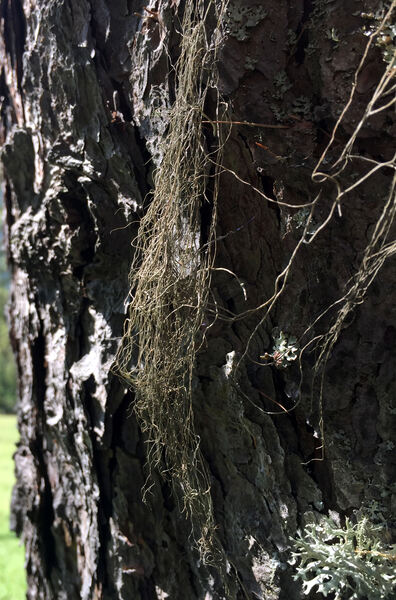

P.L. Nimis; Owner: Department of Life Sciences, University of Trieste
Italy, Friuli Venezia Giulia, Udine, Passo del Pura, Ampezzo Carnico, 1400 m
09.09.2016
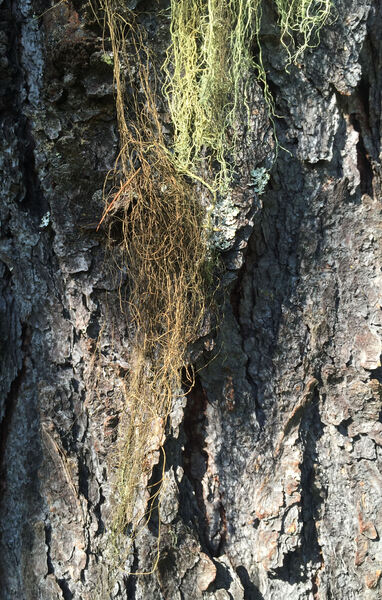

P.L. Nimis; Owner: Department of Life Sciences, University of Trieste
Italy, Friuli Venezia Giulia, Udine, Passo del Pura, Ampezzo Carnico, 1400 m
09.09.2016
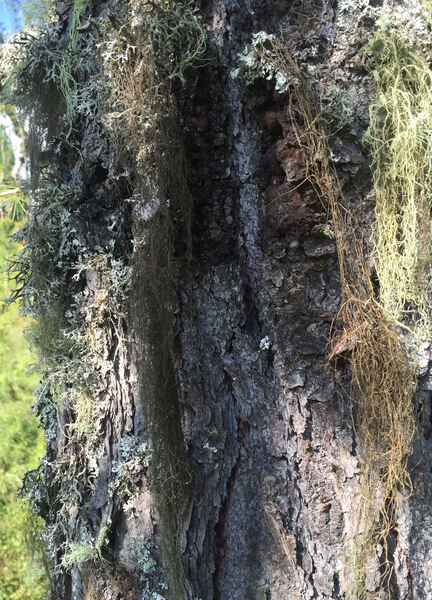

P.L. Nimis; Owner: Department of Life Sciences, University of Trieste
Italy, Friuli Venezia Giulia, Udine, Passo del Pura, Ampezzo Carnico, 1400 m
09.09.2016


P.L. Nimis; Owner: Department of Life Sciences, University of Trieste
Italy, Friuli Venezia Giulia, Udine, Passo del Pura, Ampezzo Carnico, 1400 m
09.09.2016
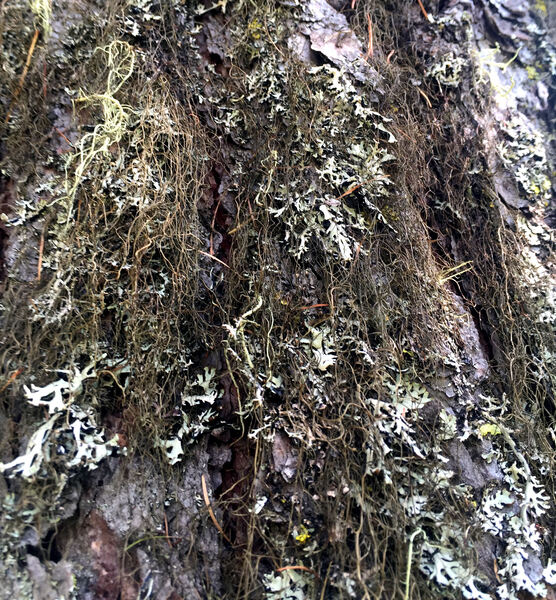

P.L. Nimis; Owner: Department of Life Sciences, University of Trieste
Italy, Friuli Venezia Giulia, Udine, Passo del Pura, Ampezzo Carnico, 1400 m
09.09.2016
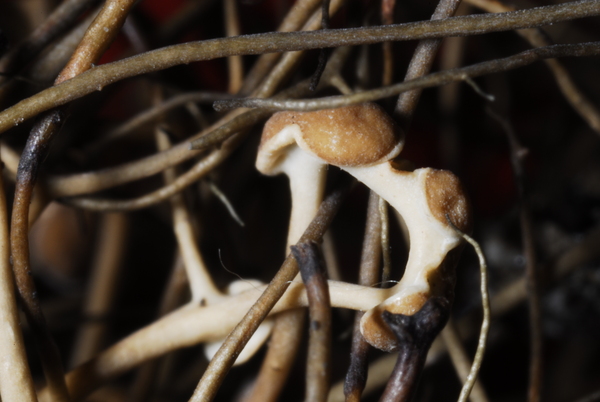

Domenico Puntillo - CC BY-SA 4.0
Italy, Calabria, Reggio Calabria, Aspromonte, Contrada Nardello, 1747 m on Abies.
19.08.2009
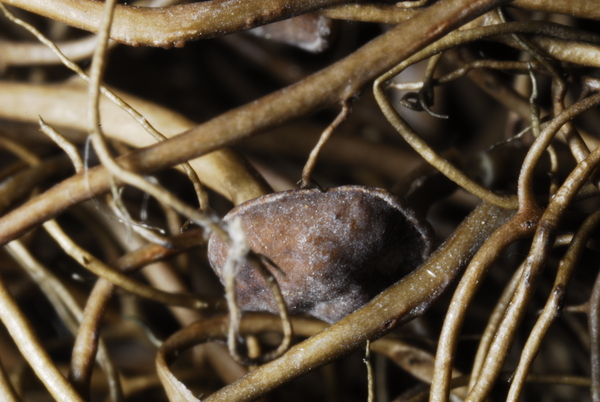

Domenico Puntillo - CC BY-SA 4.0
Italy, Calabria, Reggio Calabria, Aspromonte, Contrada Nardello, 1747 m on Abies.
19.08.2009
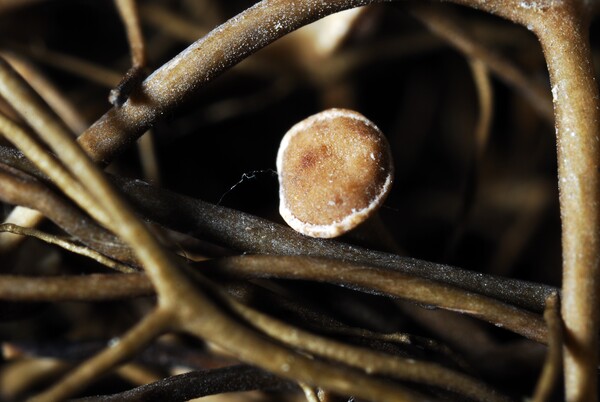

Domenico Puntillo - CC BY-SA 4.0
Italy, Calabria, Reggio Calabria, Aspromonte, Contrada Nardello, 1747 m on Abies.
19.08.2009


Domenico Puntillo - CC BY-SA 4.0
Italy, Calabria, Reggio Calabria, Aspromonte, Contrada Nardello, 1747 m on Abies.
19.08.2009
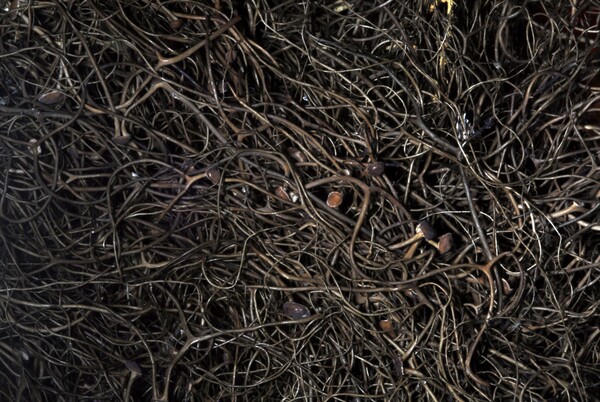

Domenico Puntillo - CC BY-SA 4.0
Italy, Calabria, Reggio Calabria, Aspromonte, Contrada Nardello, 1747 m on Abies.
19.08.2009
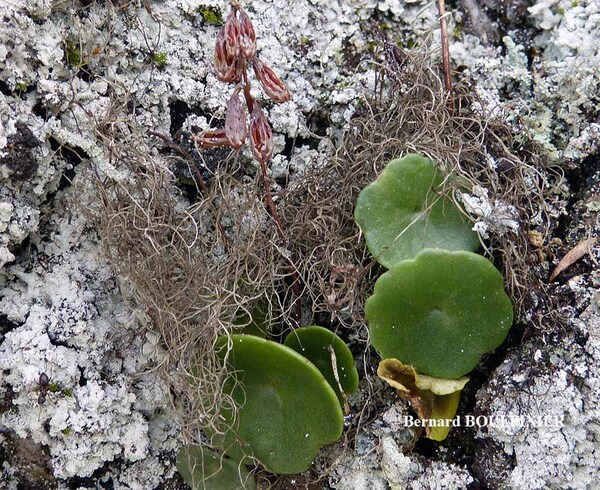
Michel David - Source: http://www.lichensmaritimes.org/index.php?task=fiche&lichen=547&lang=en
France, Plounéour-Ménez
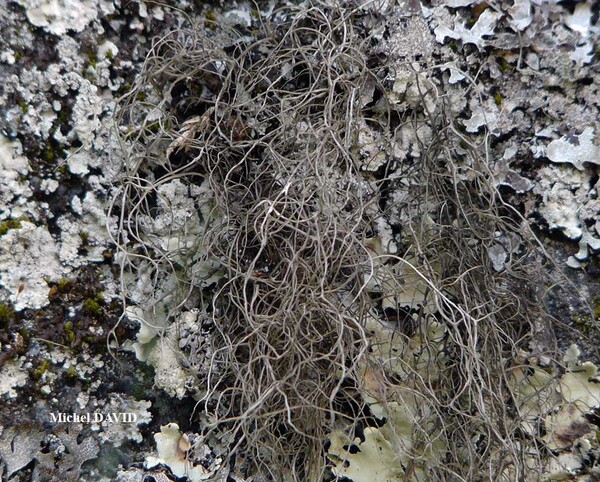
Michel David - Source: http://www.lichensmaritimes.org/index.php?task=fiche&lichen=547&lang=en
France, Plounéour-Ménez
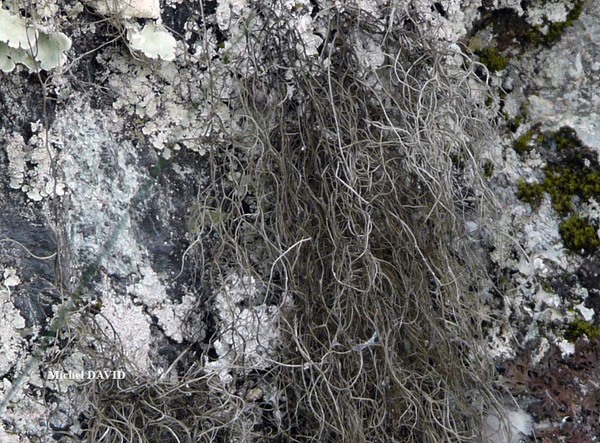
Michel David - Source: http://www.lichensmaritimes.org/index.php?task=fiche&lichen=547&lang=en
France, Plounéour-Ménez

Marta Gonzalez Garcia - Centro de Estudios Micologicos Asturianos
Spain, Alto de San Lorenzo (Teverga), 16-II-2023, sobre Fagus sylvatica.
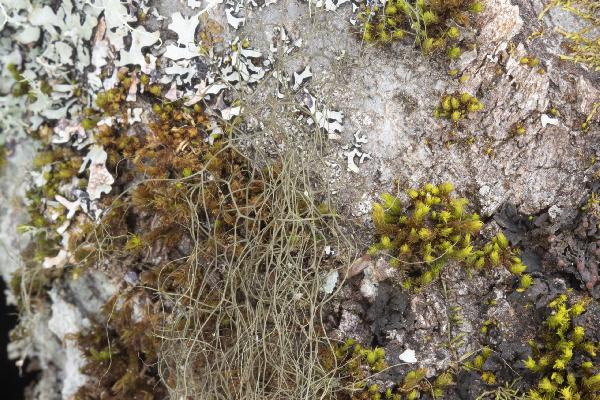
Marta Gonzalez Garcia - Centro de Estudios Micologicos Asturianos
Spain, Alto de San Lorenzo (Teverga), 16-II-2023, sobre Fagus sylvatica.
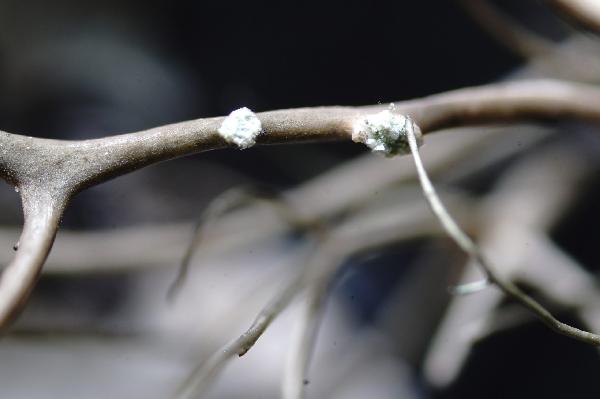
Marta Gonzalez Garcia - Centro de Estudios Micologicos Asturianos
Spain, Alto de San Lorenzo (Teverga), 16-II-2023, sobre Fagus sylvatica.
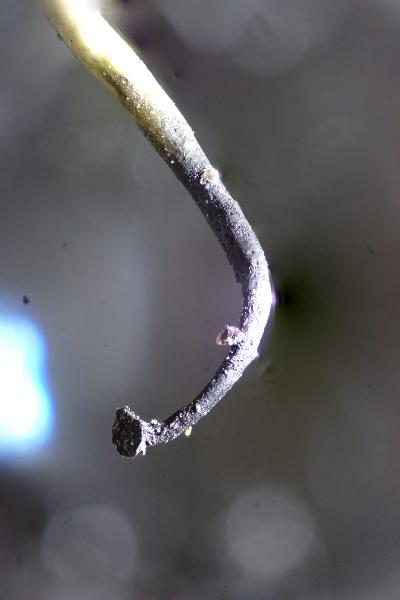
Marta Gonzalez Garcia - Centro de Estudios Micologicos Asturianos
Spain, Alto de San Lorenzo (Teverga), 16-II-2023, sobre Fagus sylvatica.
Growth form: Fruticose filamentous
Substrata: bark, lignum, soil, terricolous mosses, and plant debris
Photobiont: green algae other than Trentepohlia
Reproductive strategy: mainly asexual, by soredia, or soredia-like structures (e.g. blastidia)
Most common in areas with a humid-warm climate (e.g. most of Tyrrenian Italy)
Commonnes-rarity: (info)
Alpine belt: absent
Subalpine belt: rather common
Oromediterranean belt: extremely rare
Montane belt: rather rare
Submediterranean belt: extremely rare
Padanian area: absent
Humid submediterranean belt: extremely rare
Humid mediterranean belt: extremely rare
Dry mediterranean belt: absent

Predictive model
| Herbarium samples |


P.L. Nimis; Owner: Department of Life Sciences, University of Trieste
Italy, Friuli Venezia Giulia, Udine, Passo del Pura, Ampezzo Carnico, 1400 m
09.09.2016


P.L. Nimis; Owner: Department of Life Sciences, University of Trieste
Italy, Friuli Venezia Giulia, Udine, Passo del Pura, Ampezzo Carnico, 1400 m
09.09.2016


P.L. Nimis; Owner: Department of Life Sciences, University of Trieste
Italy, Friuli Venezia Giulia, Udine, Passo del Pura, Ampezzo Carnico, 1400 m
09.09.2016


P.L. Nimis; Owner: Department of Life Sciences, University of Trieste
Italy, Friuli Venezia Giulia, Udine, Passo del Pura, Ampezzo Carnico, 1400 m
09.09.2016


P.L. Nimis; Owner: Department of Life Sciences, University of Trieste
Italy, Friuli Venezia Giulia, Udine, Passo del Pura, Ampezzo Carnico, 1400 m
09.09.2016


Domenico Puntillo - CC BY-SA 4.0
Italy, Calabria, Reggio Calabria, Aspromonte, Contrada Nardello, 1747 m on Abies.
19.08.2009


Domenico Puntillo - CC BY-SA 4.0
Italy, Calabria, Reggio Calabria, Aspromonte, Contrada Nardello, 1747 m on Abies.
19.08.2009


Domenico Puntillo - CC BY-SA 4.0
Italy, Calabria, Reggio Calabria, Aspromonte, Contrada Nardello, 1747 m on Abies.
19.08.2009


Domenico Puntillo - CC BY-SA 4.0
Italy, Calabria, Reggio Calabria, Aspromonte, Contrada Nardello, 1747 m on Abies.
19.08.2009


Domenico Puntillo - CC BY-SA 4.0
Italy, Calabria, Reggio Calabria, Aspromonte, Contrada Nardello, 1747 m on Abies.
19.08.2009

Michel David - Source: http://www.lichensmaritimes.org/index.php?task=fiche&lichen=547&lang=en
France, Plounéour-Ménez

Michel David - Source: http://www.lichensmaritimes.org/index.php?task=fiche&lichen=547&lang=en
France, Plounéour-Ménez

Michel David - Source: http://www.lichensmaritimes.org/index.php?task=fiche&lichen=547&lang=en
France, Plounéour-Ménez

Marta Gonzalez Garcia - Centro de Estudios Micologicos Asturianos
Spain, Alto de San Lorenzo (Teverga), 16-II-2023, sobre Fagus sylvatica.

Marta Gonzalez Garcia - Centro de Estudios Micologicos Asturianos
Spain, Alto de San Lorenzo (Teverga), 16-II-2023, sobre Fagus sylvatica.

Marta Gonzalez Garcia - Centro de Estudios Micologicos Asturianos
Spain, Alto de San Lorenzo (Teverga), 16-II-2023, sobre Fagus sylvatica.

 INDEX FUNGORUM
INDEX FUNGORUM
 GBIF
GBIF
 DOLICHENS
DOLICHENS

